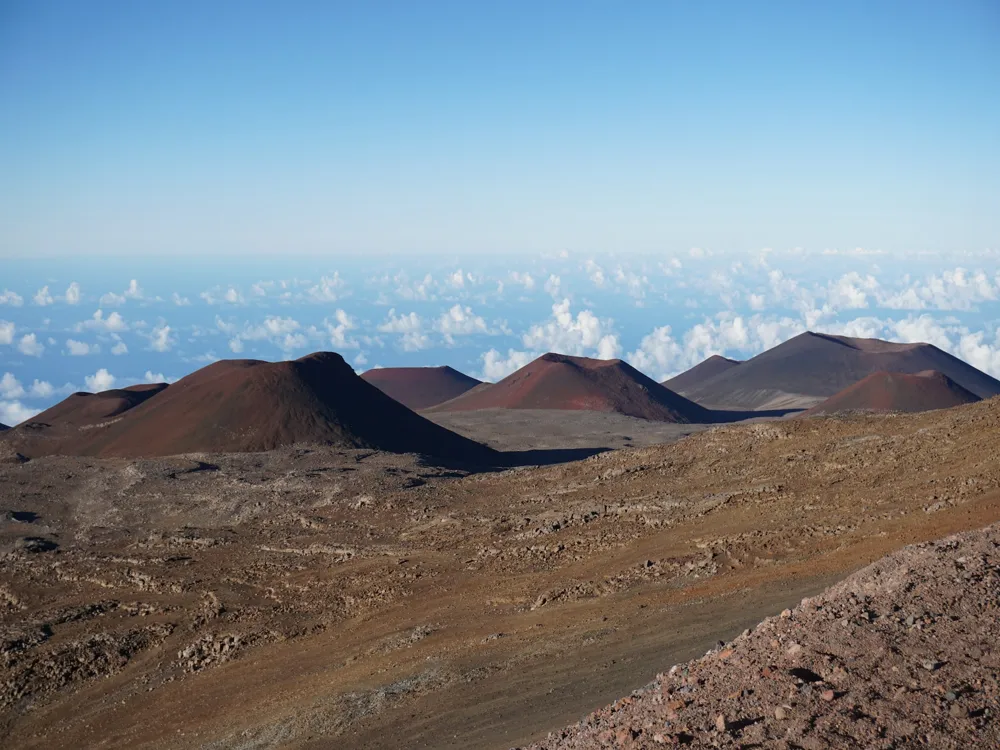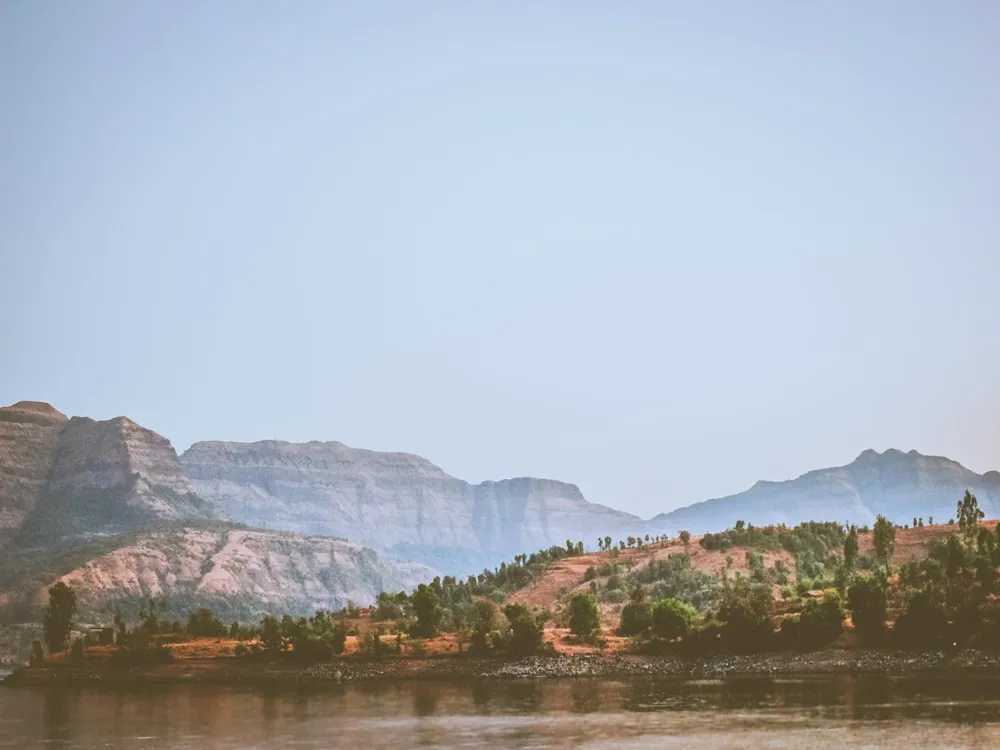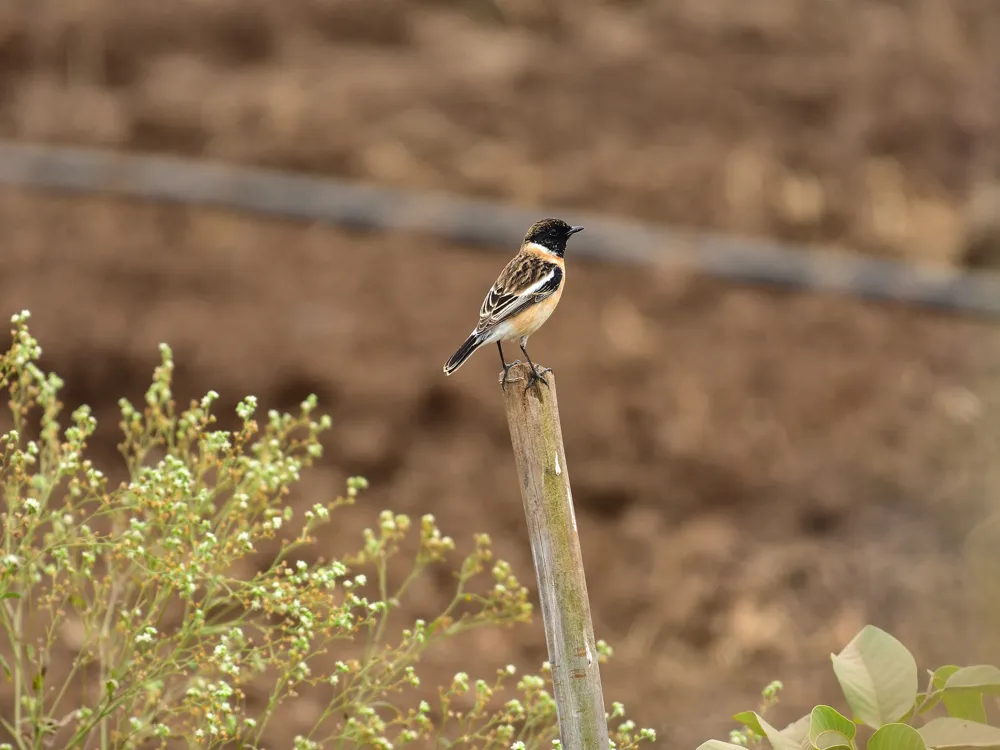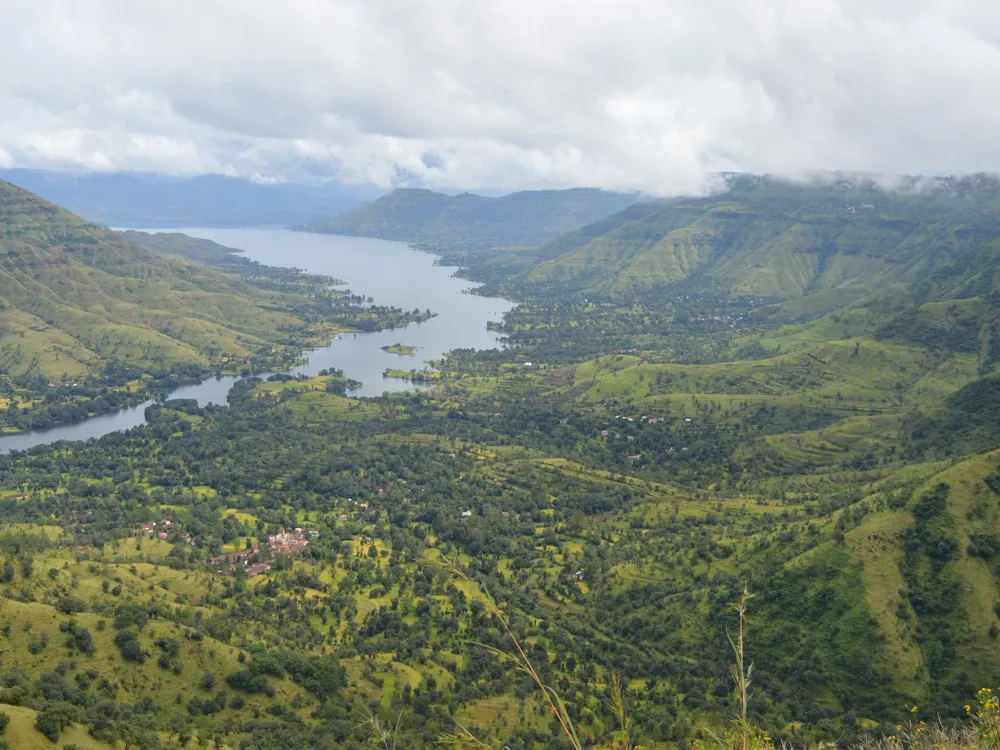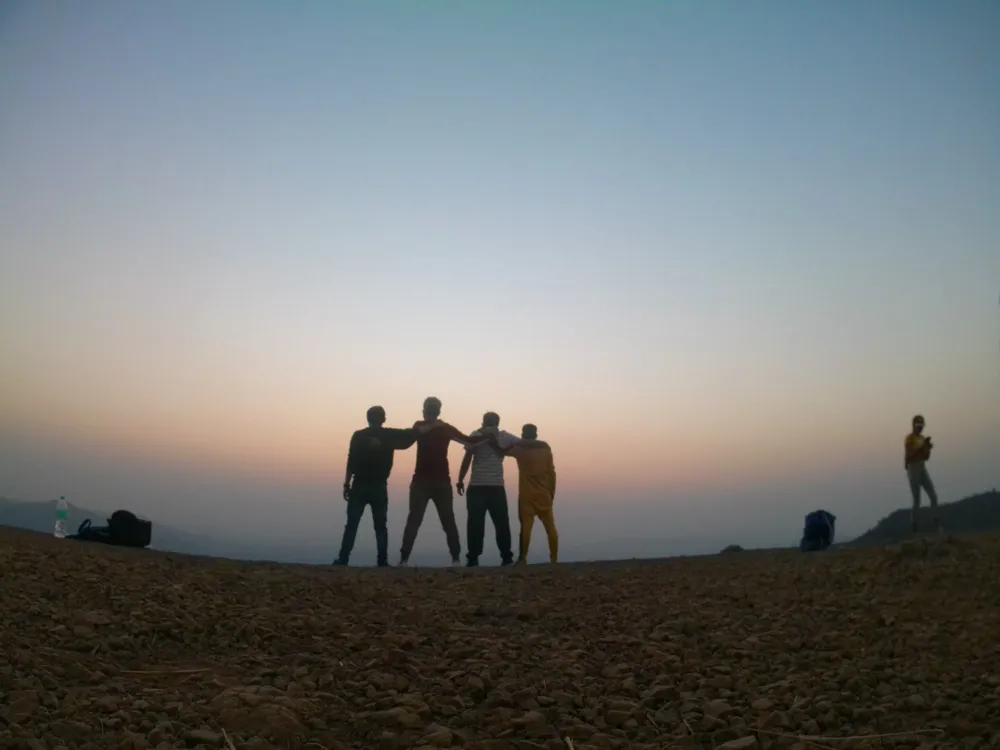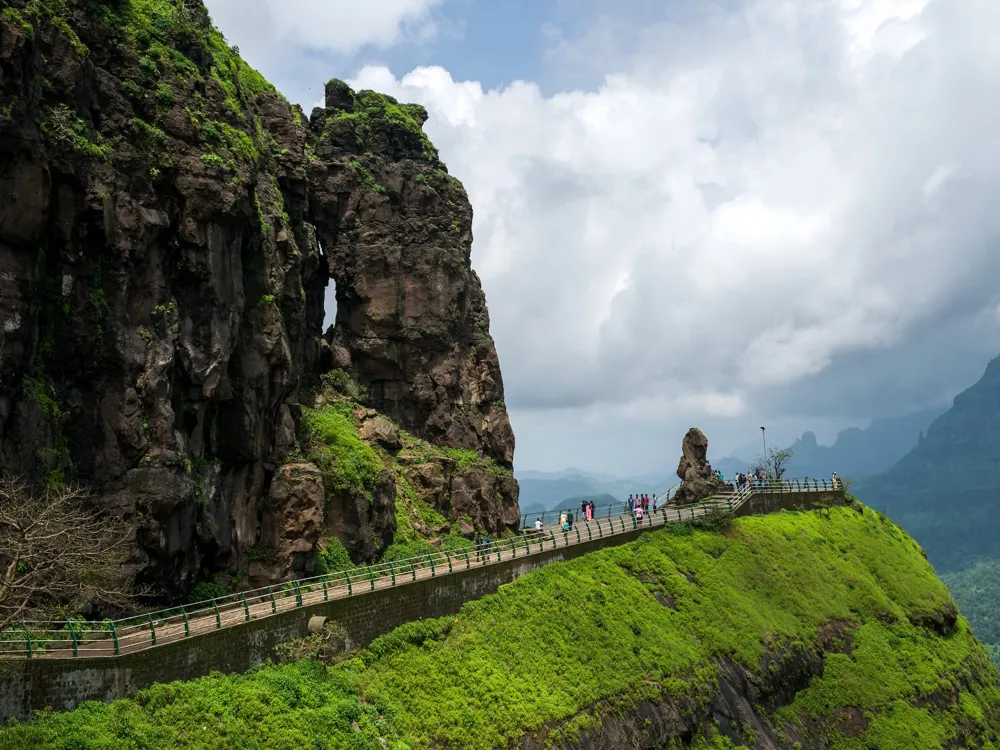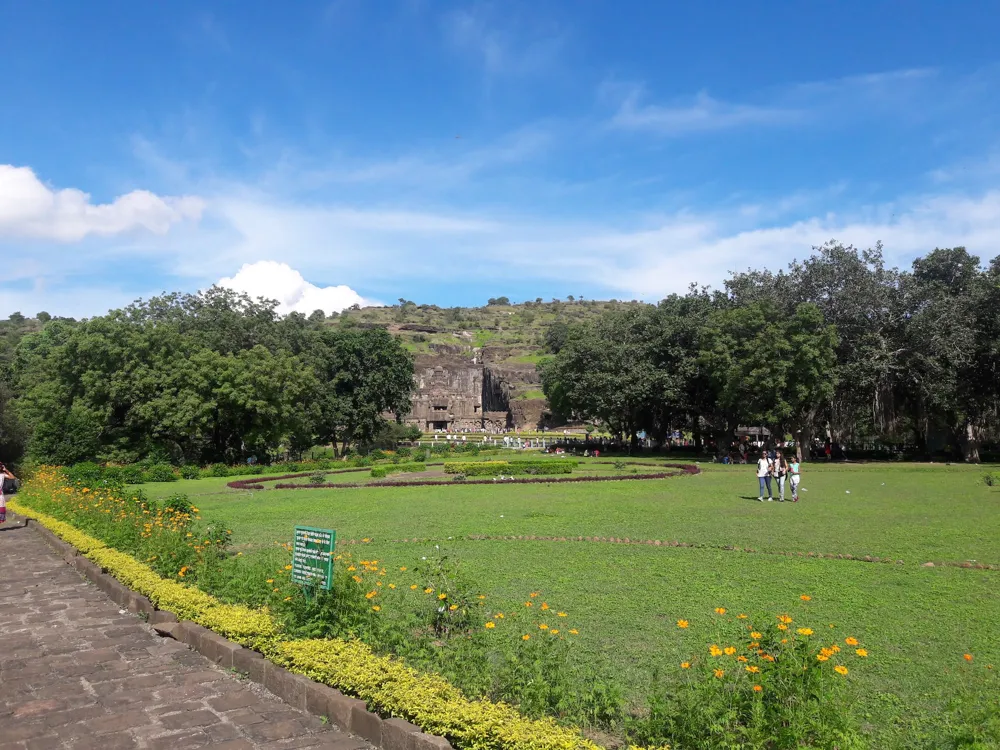The Nasik Caves, also known as Pandavleni Caves, are a group of 24 caves carved between the 1st century BCE and the 3rd century CE. These caves are located near Nasik in Maharashtra, India, and are an eminent example of Indian rock-cut architecture. The caves were historically important as they were a center of religious and social activities. The caves primarily served as viharas or monasteries for Buddhist monks but also included some chaityas, or halls for congregational worship. The proximity of the caves to the ancient trade route added to their significance, making them a meeting place for traders and monks alike. The sculptures and inscriptions inside the caves are of great historical and cultural value, providing insights into the lives of the inhabitants and the prevailing socio-political climate. Cave 3, in particular, is notable for its grand architecture and elaborate sculptures. The caves are surrounded by lush greenery and provide a tranquil environment, making them a perfect blend of cultural heritage and natural beauty. This peaceful setting served as an ideal place for meditation and spiritual activities for the monks. The architecture of the Nasik Caves is a testament to the engineering and artistic skills of ancient India. The caves are hewn out of solid rock and display a variety of architectural styles, reflecting the changes in art and culture over the centuries. Most caves have a simple, modest entrance leading to an interior hall with stone pillars and sculptures. The chaitya halls, particularly Cave 10, are characterized by their vaulted roofs, intricate rock-cut stupas, and beautifully carved facades. Cave 3, known as the 'Great Chaitya', is the most prominent and elaborately carved cave. It features a large, intricately carved stupa and a facade adorned with sculptures of Buddha and various Bodhisattvas. The water cisterns, inscriptions, and carvings on the walls and pillars of the caves offer a deep insight into the architectural and religious practices of the time. The use of light and space in these caves is particularly remarkable, with the architects skillfully manipulating these elements to enhance the spiritual ambiance of the caves. The best time to visit the Nasik Caves is from October to March when the weather is relatively cooler and more pleasant, making it ideal for exploring the caves. Visitors are advised to wear comfortable and modest clothing suitable for climbing and walking through the caves. Good walking shoes are a must. Opting for a guided tour can enhance your experience as knowledgeable guides provide valuable insights into the history and architecture of the caves. As these caves are of great historical and religious importance, visitors are requested to maintain the sanctity of the place by not causing any damage or littering. Photography is allowed, but it's advisable to check for any restrictions in certain areas of the caves. Using flash is often prohibited to preserve ancient paintings. Reaching Nasik Caves is fairly straightforward. The nearest city is Nasik, well-connected by road, rail, and air. The caves are about 8 km from Nasik city center and can be reached by local transport like buses, auto-rickshaws, or taxis. For those traveling by air, the nearest airport is in Mumbai, from where you can take a train or a bus to Nasik. The caves are a short drive from the main city, and the route is well-signposted. Read More:Overview of Nasik Caves, Maharashtra
Architecture of Nasik Caves
Tips When Visiting Nasik Caves
Best Time to Visit
Wear Comfortable Attire
Guided Tours
Preserve the Sanctity
Photography
How To Reach Nasik Caves
Nasik Caves
Nasik
Maharashtra Goa
NaN onwards
View nasik Packages
Weather :
Label : Must Visit
Tags : Cave
Timings : 8:00 AM - 6:00 PM
Time Required : 2-3 hrs
Entry Fee : Adults: INR 2,
Children (Up to 15 years): Free,
The entry is free for everyone on Fridays
Planning a Trip? Ask Your Question
Nasik Travel Packages
View All Packages For Nasik
Top Hotel Collections for Nasik

Private Pool

Luxury Hotels

5-Star Hotels

Pet Friendly
Top Hotels Near Nasik
Other Top Ranking Places In Nasik
View All Places To Visit In nasik
View nasik Packages
Weather :
Label : Must Visit
Tags : Cave
Timings : 8:00 AM - 6:00 PM
Time Required : 2-3 hrs
Entry Fee : Adults: INR 2,
Children (Up to 15 years): Free,
The entry is free for everyone on Fridays
Planning a Trip? Ask Your Question
Nasik Travel Packages
View All Packages For Nasik
Top Hotel Collections for Nasik

Private Pool

Luxury Hotels

5-Star Hotels

Pet Friendly








